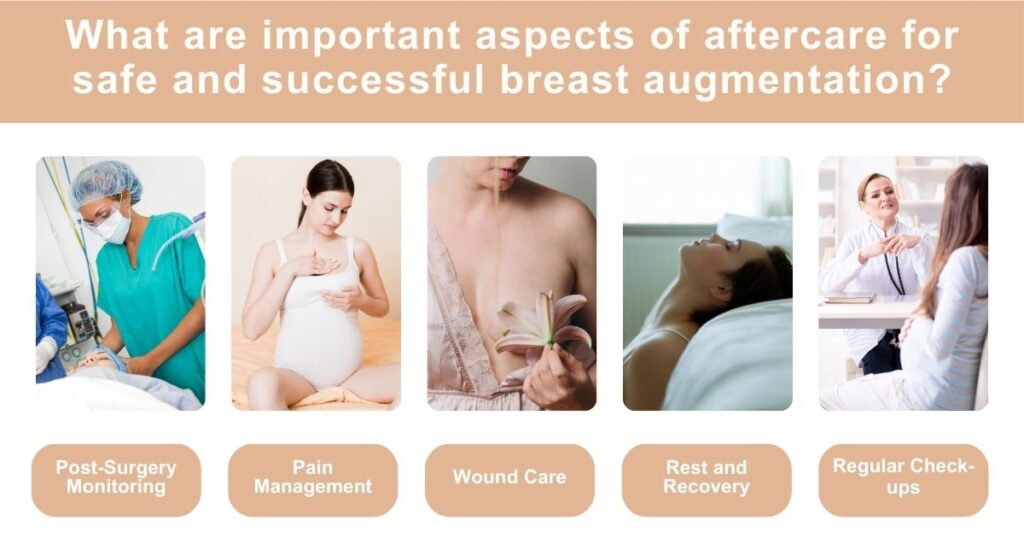Is breast augmentation safe? – this is a question many individuals grapple with when considering this popular cosmetic procedure. Addressing safety concerns related to breast augmentation is essential, given its increasing demand worldwide. With advances in surgical technology and technique, the safety of this procedure has dramatically improved.
However, educating potential patients about the risks, benefits, and alternatives remains vital, ensuring well-informed decisions are made.
What Safety Measures Should Be For Breast Augmentation?
Ensuring the safety of a breast augmentation procedure begins well before the surgery itself. Here are some essential safety measures to consider:
- Choosing a Qualified Surgeon
- Comprehensive Consultation
- Pre-Surgery Testing
- Anesthesia Safety
Choosing a Qualified Surgeon
The surgeon’s expertise plays a significant role in the procedure’s safety. An experienced, board-certified surgeon is crucial for breast augmentation. Ask about their success rate, the number of procedures they’ve performed, and their approach to patient safety.
Comprehensive Consultation
A thorough consultation allows the surgeon to understand your medical history, current health status, and expectations from the surgery. This information is vital to plan a safe and effective procedure. Be honest and open during this consultation to ensure the surgeon has all the necessary information.
Book A Consultation With Dr Shehzadi Tasneem
Top-rated Plastic Surgeon For Breast Augmentation in Dubai
Installment Plan Available
See related: Achieving D-cup size through breast augmentation
Pre-Surgery Testing
Various tests before surgery, such as blood and mammograms, can detect potential problems. These tests help ensure you’re in good health before undergoing the procedure.
Anesthesia Safety
Surgery requires anaesthesia, and your surgeon should know of any allergies or past reactions to anaesthesia. A qualified anesthesiologist should be present during the procedure to monitor your vitals and manage the anaesthesia.
Is Breast Augmentation Safe: Risk Factors to Consider
Breast augmentation , like any surgical procedure, carries certain risks. Being aware of these potential complications is crucial before proceeding with the surgery. Here are some key risk factors to consider:
Surgical Complications
As with any operation, the act of having surgery itself carries some risks, such as:
- Adverse anaesthesia reaction: Although uncommon, some patients may experience adverse effects from the anaesthesia used for the operation.
- Infection: Although antibiotics are frequently administered to prevent it, there is a chance of infection at the surgical site.
- Bleeding: Excessive bleeding during or after the surgery can lead to complications.
Implant-Related Risks
Specific risks are associated with the breast implants themselves:
- Implant rupture: Both saline and silicone implants can rupture, causing the implant to deflate. If a silicone implant ruptures, it may not be noticeable without an MRI.
- Capsular contracture is when scar tissue forms around the implant and hardens, potentially causing discomfort and changes in breast appearance.
- Changes in sensation: Some people experience changes in nipple or breast sensation after the surgery, which can be temporary or permanent.
Long-Term Health Risks
Additionally, there are possible long-term health risks to consider:
- Breast Implant Illness (BII): Some people claim that their breast implants are responsible for various symptoms, such as weariness, joint discomfort, and memory loss. To fully comprehend this phenomenon, more study is necessary.
- Breast Implant-Associated Anaplastic Large Cell Lymphoma (BIA-ALCL): This is a rare type of non-Hodgkin’s lymphoma that can develop around breast implants, remarkably textured ones.
Cosmetic Concerns
There are also potential cosmetic concerns to consider:
- Dissatisfaction with cosmetic results: Some people may not be happy with their augmented breasts’ size, shape, or feel.
- Need for further surgery: Over time, you may need additional surgeries to replace or remove the implants, correct complications, or address cosmetic concerns.
Impact on Lifestyle
Breast augmentation can also impact specific aspects of your lifestyle: Breast Augmentation CC Sizes refer to the amount of liquid or gel used to increase the size of a person’s breasts. The higher the CC size, the larger the breasts will be after the surgery. Breast implants are like balloons that doctors put inside a person’s chest to make their breasts bigger.
Large Breast Augmentation Options are choices for making breasts bigger through surgery.
- Breastfeeding: While most people can breastfeed after breast augmentation, some may experience difficulties.
- Mammograms: Breast implants can make mammograms more problematic, although special techniques can help get a more accurate reading.
What Aftercare is Necessary For a Safe And Successful Breast Augmentation?

Proper aftercare is as important as surgery to ensure safe and successful breast augmentation. Here are some critical aspects of aftercare:
- Post-Surgery Monitoring
- Pain Management
- Wound Care
- Rest and Recovery
- Regular Check-ups
- Long-Term Monitoring
- Emotional Support
Post-Surgery Monitoring
Immediately after the surgery, you’ll be monitored in a recovery area until the anaesthesia wears off. A doctor will check your vital signs and ensure no immediate complications before releasing you.
Pain Management
Some discomfort and pain are normal after breast augmentation. Your surgeon will provide pain medication and instructions on managing this pain at home.
Wound Care
Taking care of the surgical incisions is crucial to prevent infection. Your surgeon will go over post-op care with you, including when and how often to change bandages and look for symptoms of infection.
Rest and Recovery
Getting plenty of rest is essential for healing. Avoid strenuous activities and follow your surgeon’s advice on when you can return to normal activities and exercise.
Regular Check-ups
Regular follow-up appointments allow your surgeon to monitor your recovery and catch potential complications early. Attending these appointments and discussing your concerns with your surgeon is essential.
Long-Term Monitoring
Breast implants require long-term monitoring to check for complications like implant rupture or capsular contracture. A regular mammogram and, in some cases, an MRI is recommended.
Emotional Support
Recovery from breast augmentation can also have emotional aspects, such as adjusting to the new body image. Having a support system and discussing any emotional concerns with your surgeon or a mental health professional can be helpful.
Breast augmentation, while potentially transformative regarding self-confidence and body image, should never be approached lightly. When contemplating this procedure, it’s vital to question Is breast augmentation safe ? Understanding the associated risks and benefits is essential to ensure safety and success, as is choosing a highly experienced and competent surgeon.
Maintaining realistic expectations, prioritizing your health, and ensuring safety should form the cornerstone of your decision-making process. Remember, while breast augmentation could significantly change your body image, it must be approached with careful consideration and informed knowledge.
Should you find yourself contemplating a breast augmentation and desiring more profound knowledge about the procedure, its potential risks, and whether it aligns with your needs, we encourage you to make contact without delay.
Dr Shehzadi is dedicated to providing comprehensive, patient-centred care. She will gladly respond to your inquiries and walk you through the procedure.
Ready to take the next step? Book a consultation with Dr Shehzadi Tasneem today. You can discuss your goals, concerns, and questions without feeling pressured. Consider your body and your health before making any decisions.












